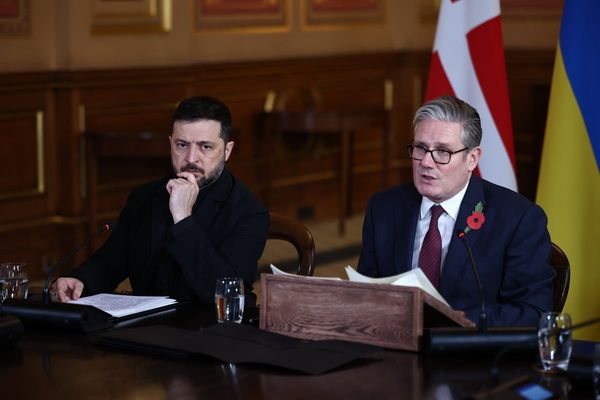A sheriff has ruled the claims of mistaken identity by fugitive Nicholas Rossi are bogus and he is the man sought by the US on rape charges.
Sheriff Norman McFadyen noted the wealth of fingerprint, photographic and witness evidence presented by prosecutors to prove their case.
In a ruling which was filmed by a TV camera for later broadcast, the sheriff castigated the testimony given by Rossi who claimed to be a man called Arthur Knight.
He called Rossi’s allegation that he was tattooed while in a coma in a Glasgow hospital to frame him as “implausible and fanciful”.
And the sheriff said Rossi’s “highly suspicious” change of names in recent years was “consistent with someone who was hiding from someone or something”.
The extradition hearing has been held this week at Edinburgh Sheriff Court to determine the true identity of the accused.
After Rossi's identity was confirmed, Sheriff McFadyen set a week-long extradition hearing to begin on March 6 next year, with a preliminary hearing on January 5.
He also refused another bail application by Rossi, who is being held on remand at Edinburgh's Saughton Prison, telling him his status as a "flight risk" had now been established by evidence, including his use of aliases.
Rossi, 35, who is accused of faking his own death in the US, was arrested at Glasgow’s Queen Elizabeth University Hospital last December while receiving treatment for Covid-19.
He is being sought in Utah on charges for two alleged rapes and a sexual assault.
Delivering his ruling on Friday, Sheriff McFadyen said the hearing had “not been concerned” over whether Rossi should be extradited, but solely whether he was the wanted fugitive being sought.

The court heard previously from two fingerprint experts from the Scottish Police Authority who testified prints on file in the US for Rossi were “identical” to those of the accused.
During his evidence on Tuesday, Rossi said his fingerprints were taken in hospital by an NHS employee called ‘Patrick’ whose surname he couldn’t recall as he was “sedated”.
Sheriff McFadyen said there was “no valid or coherent reason to doubt” the prints had been properly provided by the American authorities for Rossi.
He rejected the accused’s “explanation as to how his prints came to be taken while he was in hospital and inserted in the relevant files as implausible and fanciful”.
The sheriff said he was “satisfied” individual prints bore the “unique characteristics” of the accused and “they are therefore his fingerprints”.
Rossi also alleged the photos of the fugitive on the Interpol red notice were not him, but were “transposed images” created by Utah prosecutors.
Sheriff McFadyen said he rejected Rossi’s claims of “manipulation of photographs by US authorities or that they are otherwise unreliable”.
He said he was satisfied by the evidence of witnesses, and “my own assessment”, that the accused “is indeed shown in the photographs”.
On Tuesday, Rossi told the hearing how he was tattooed while in a coma at Queen Elizabeth University Hospital, awaking to find both his upper and lower arms elaborately inked with similar designs to the wanted man.
In his ruling, Sheriff McFadyen said he was “baffled” as to why the court wasn’t provided with photos of the accused’s arms.
But he found there was “powerful evidence of similarity of quite distinctive tattoos” being seen on Rossi by witnesses including hospital staff and cops.
He said Rossi’s evidence “that he regained consciousness to find that he had been tattooed while in a coma in the intensive care unit...was equally as, if not more implausible and fanciful than his evidence about being fingerprinted by Patrick”.
Speaking in a raspy Irish accent which the prosecutor described as “all over the place”, Rossi claimed to be born in Dublin and said he’d never even visited America.
He said his birth name was Nicholas Brown, which he later changed to Arthur Knight after marrying his wife Miranda Knight and to help forget a distressing boyhood.
With regards to the name change, the sheriff said he didn’t accept Rossi’s explanation that it was “just about getting married and addressing adverse childhood experiences”.
He added: “It seems to me highly suspicious that the change of names went through a number of permutations. That seems to me to be consistent with someone who was hiding from something or someone.
“I do not accept the requested person’s evidence that he has never been to the United States and that he is not the person whose extradition is requested.
“I am ultimately satisfied on the balance of probabilities, by the evidence of fingerprint, photographic and tattoo evidence, taken together, supported by the change of names, that Mr Knight is indeed Nicholas Rossi, the person sought for extradition to the United States.”
US prosecutors claim Rossi raped a 21-year-old in Utah, in 2008. He is also said to have attacked women in Rhode Island, Ohio and Massachusetts.
Rossi reportedly told US media in December 2019 that he had late-stage non-Hodgkin lymphoma and had weeks to live. Several outlets reported that he had died in February 2020.
Don't miss the latest news from around Scotland and beyond - Sign up to our daily newsletter here.
READ NEXT:
- Scots mum left stranded in flat with young son after housing association rip out bathroom
- Scot admitted slashing woman's bum with knife in rough S&M sex game
- Man devastated by suicides of three pals in bid to overhaul mental health services in Scotland
Woman left with horrific injuries after dog attack begs doctors to amputate limb
Scotland risks 'grinding to a halt' as teachers join nurses and train drivers in voting for strikes
Heritage quango boss jets off to New Zealand for nine weeks while tourist landmarks stay closed







